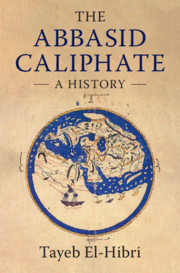Book contents
- The Abbasid Caliphate
- The Abbasid Caliphate
- Copyright page
- Dedication
- Contents
- Figures
- Maps
- Acknowledgments
- Note on Transliteration
- Chronology
- Abbreviations
- Genealogical Chart of the Caliphs
- Maps
- 1 Introduction
- 2 From Revolution to Foundations (750–775)
- 3 The Golden Age of the Abbasid Caliphate (775–833)
- 4 From Triumph to Tribulation (833–990)
- 5 The Caliphate as a Religious Authority (990–1225)
- 6 The Twilight of the Abbasid Caliphate (1225–1258)
- 7 Conclusion
- Appendix: The Abbasid Caliphs
- Glossary
- Bibliography
- Index
- Plate Section
6 - The Twilight of the Abbasid Caliphate (1225–1258)
Published online by Cambridge University Press: 28 April 2021
- The Abbasid Caliphate
- The Abbasid Caliphate
- Copyright page
- Dedication
- Contents
- Figures
- Maps
- Acknowledgments
- Note on Transliteration
- Chronology
- Abbreviations
- Genealogical Chart of the Caliphs
- Maps
- 1 Introduction
- 2 From Revolution to Foundations (750–775)
- 3 The Golden Age of the Abbasid Caliphate (775–833)
- 4 From Triumph to Tribulation (833–990)
- 5 The Caliphate as a Religious Authority (990–1225)
- 6 The Twilight of the Abbasid Caliphate (1225–1258)
- 7 Conclusion
- Appendix: The Abbasid Caliphs
- Glossary
- Bibliography
- Index
- Plate Section
Summary
The reign of al-Mustansir represents a continuum to al-Nasir's in terms of the stability of a caliphal state centered on the region of Iraq and Khuzistan. With the primary focus of Mongol invasions on Russia and Eastern Europe, the Abbasids thrive with affinity to the Ayyubids and Rum Seljuks. The Abbasid construction of the Mustansiriyya madrasa marks a new type of patronage for a project that diverged from previously endowed structures, such as caravanserais and Sufi lodges. The inclusion of all four Sunni sects of jurisprudence changed the idea of the madrasa while the generous support for students indicated Abbasid affluence. New wavesin the arts (the Baghdad school of manuscript painting) and architectural decorative forms (the girih and the muqarnas) flourish alongside developments in Arabic calligraphy with the famous Yaqut al-Musta'simi. A situation of Mongol belligerence and Abbasid disarray in the reign of the last caliph, al-Musta'sim, accelerates the pace to the conquest of Baghdad in 1258. A shadow Abbasid caliphate lives on in Mamluk Egypt until the Ottoman conquest in 1517.
Keywords
- Type
- Chapter
- Information
- The Abbasid CaliphateA History, pp. 246 - 276Publisher: Cambridge University PressPrint publication year: 2021

